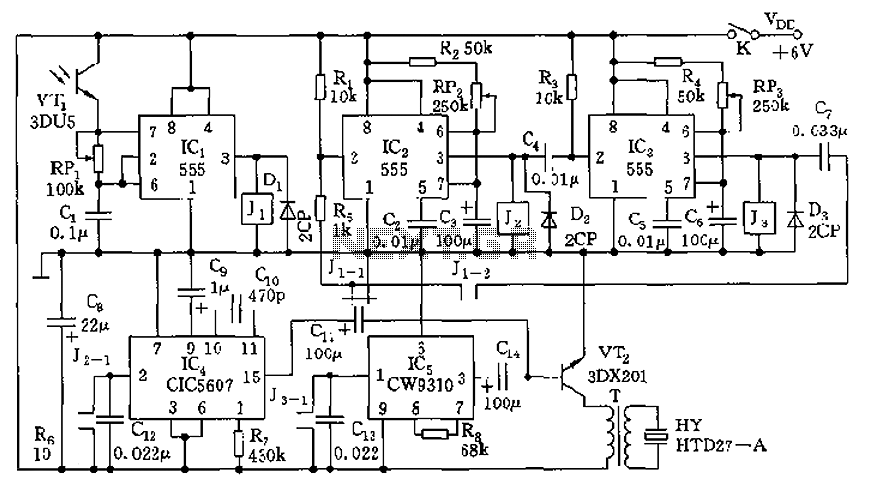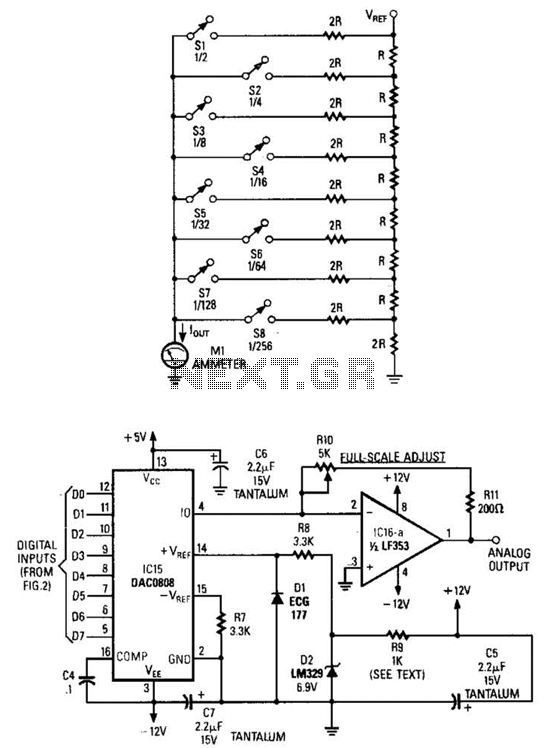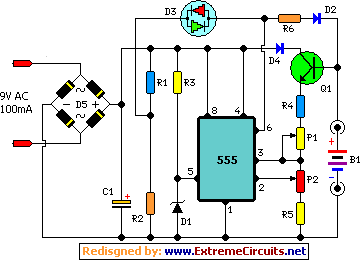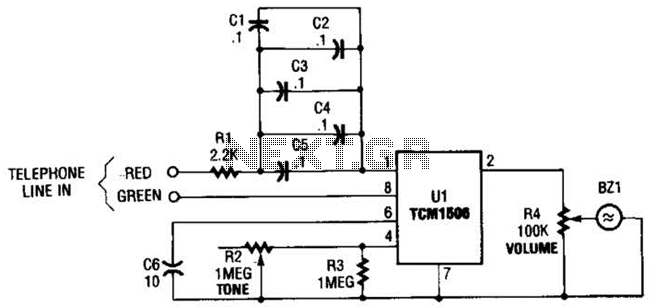
Resistive-Capacitive sinusoidal synchronous reset control transistor trigger circuit
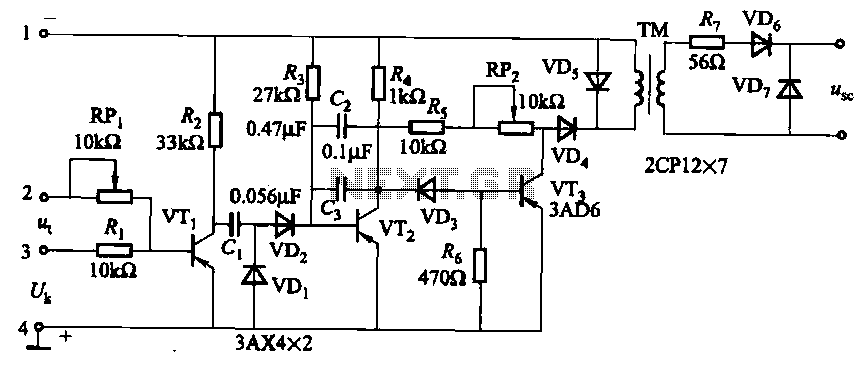
The circuit is designed for inductive loads, specifically within a thyristor power unit, such as a three-phase step-down DC motor speed control and other applications. It is capable of delivering sufficient output power to trigger a thyristor rated at 100A. An adjustment potentiometer, labeled RPz, allows for modification of the output pulse width, with a phase shift range of approximately 180 degrees.
This circuit is particularly beneficial for controlling the speed of DC motors, where precise regulation of power is essential. The thyristor acts as a switch that can handle high current loads, making it suitable for industrial applications. The ability to adjust the pulse width via the potentiometer RPz provides flexibility in controlling the motor's speed, enabling fine-tuning of performance based on the specific requirements of the load.
The circuit typically includes a phase control mechanism that adjusts the timing of the thyristor's conduction phase, which in turn modifies the average voltage and current supplied to the motor. This phase control is achieved through a phase shift circuit that can vary the triggering point of the thyristor within a 180-degree range, allowing for smooth acceleration and deceleration of the motor.
In practical applications, additional components such as diodes for flyback protection, capacitors for smoothing the output, and resistors for current limiting may be incorporated to enhance reliability and performance. The overall design must ensure that the circuit can withstand the thermal and electrical stresses associated with high power levels, necessitating careful selection of components and thermal management strategies.
This circuit configuration is widely utilized in various industrial settings, including conveyor systems, fans, and pumps, where precise motor control is critical for operational efficiency.The circuit is suitable for inductive loads in general thyristor power unit (three-phase step-down DC motor speed and other exceptions), the output power more than enough to trigger thyristor 100A. Adjustment potentiometer RPz, can change the output pulse width. Phase shift range of about 180.
This circuit is particularly beneficial for controlling the speed of DC motors, where precise regulation of power is essential. The thyristor acts as a switch that can handle high current loads, making it suitable for industrial applications. The ability to adjust the pulse width via the potentiometer RPz provides flexibility in controlling the motor's speed, enabling fine-tuning of performance based on the specific requirements of the load.
The circuit typically includes a phase control mechanism that adjusts the timing of the thyristor's conduction phase, which in turn modifies the average voltage and current supplied to the motor. This phase control is achieved through a phase shift circuit that can vary the triggering point of the thyristor within a 180-degree range, allowing for smooth acceleration and deceleration of the motor.
In practical applications, additional components such as diodes for flyback protection, capacitors for smoothing the output, and resistors for current limiting may be incorporated to enhance reliability and performance. The overall design must ensure that the circuit can withstand the thermal and electrical stresses associated with high power levels, necessitating careful selection of components and thermal management strategies.
This circuit configuration is widely utilized in various industrial settings, including conveyor systems, fans, and pumps, where precise motor control is critical for operational efficiency.The circuit is suitable for inductive loads in general thyristor power unit (three-phase step-down DC motor speed and other exceptions), the output power more than enough to trigger thyristor 100A. Adjustment potentiometer RPz, can change the output pulse width. Phase shift range of about 180.

